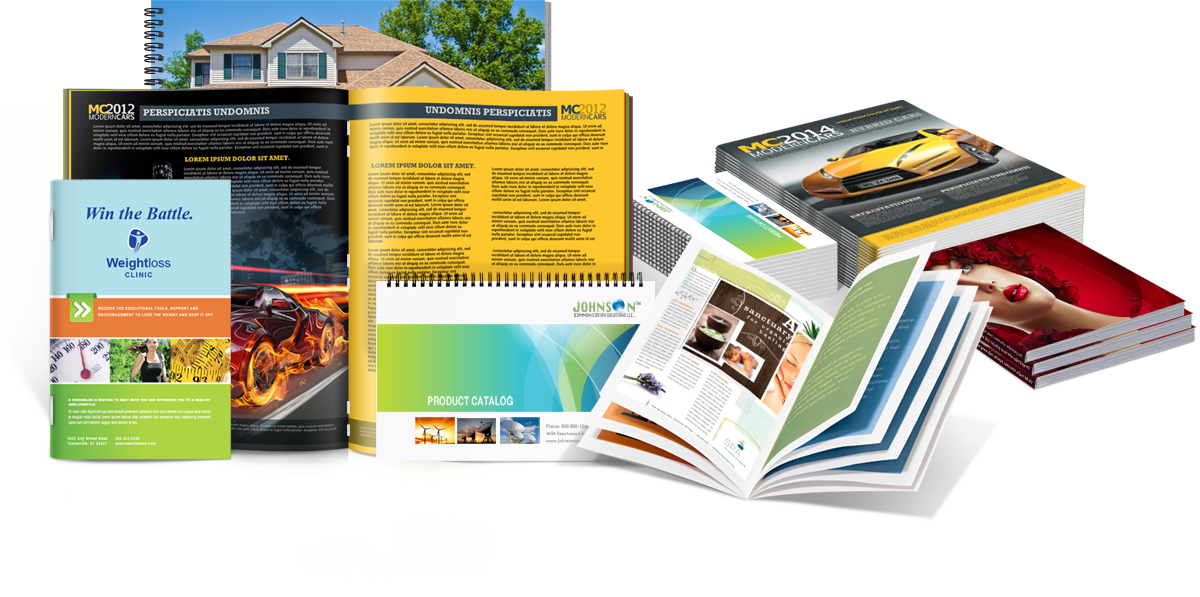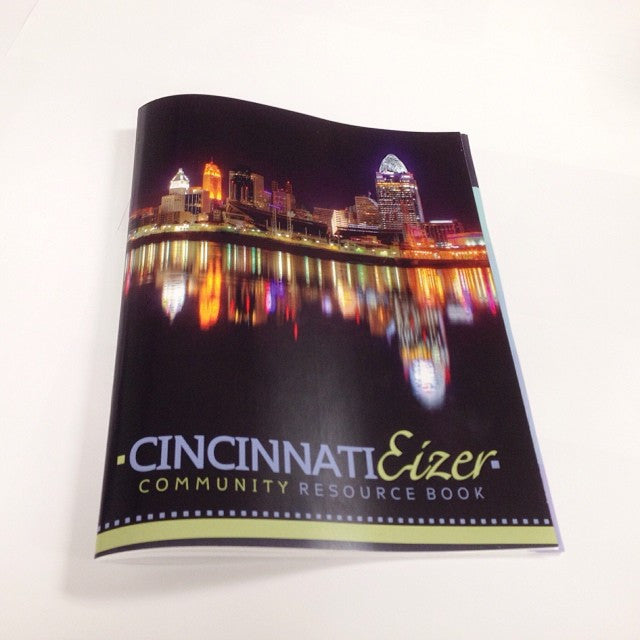The Necessary Guide to Recognizing Brochure Printing Options and Techniques
The procedure of brochure printing entails numerous factors to consider that can substantially affect the final product. From choosing the ideal style and size to understanding the subtleties of binding approaches, each option plays a vital role. Additionally, factors such as paper stock and printing strategies additional influence the performance of the brochure. As one navigates these options, it comes to be critical to comprehend just how they adjoin and what that implies for the overall end result.
Comprehending Pamphlet Dimensions and styles
When considering pamphlet printing, understanding the various layouts and sizes readily available is necessary for accomplishing the wanted presentation. Brochures can be generated in many formats, including saddle-stitched, spiral-bound, and perfect-bound, each offering distinctive benefits. Usual dimensions range from standard letter (8.5 x 11 inches) to smaller alternatives like A5 (5.8 x 8.3 inches), enabling versatility based upon content and target audience.Selecting the proper dimension can affect both the layout and visitor engagement. Bigger sizes may match visually driven material, while smaller layouts might be extra easy to use and mobile. Additionally, the variety of pages impacts the selection of binding technique, as thicker pamphlets may require tougher bindings. Ultimately, understanding these elements permits for a much more customized approach, making certain that the final item lines up with the designated message and visual, enhancing the general effectiveness of the communication.
Selecting the Right Paper Stock

Binding Techniques: Considerations and alternatives
When it pertains to binding approaches for booklets, a number of alternatives are readily available, each with unique benefits. Saddle stitch binding offers a cost-efficient remedy for thinner pamphlets, while best binding methods supply a more polished search for thicker magazines. Wire-O binding sticks out for its longevity and ease of use, making it optimal for papers that call for adaptability.
Saddle Stitch Binding
Saddle stitch binding offers a useful and economical solution for putting together brochures, making it a prominent option amongst authors and services. This binding technique entails folding sheets of paper in fifty percent and stapling them along the fold line, developing a organized and neat appearance. Generally suitable for booklets with a lower web page matter, saddle sewing is suitable for publications, pamphlets, and training materials. The simplicity of this strategy permits fast manufacturing and is typically favored for short runs or advertising things. It is necessary to note that saddle stitch binding may not be ideal for thicker brochures, as the spine might not hold up under boosted weight. In general, it remains a reliable alternative for lots of printing projects.
Perfect Binding Strategies
Perfect binding is a commonly used method that offers a sleek and professional finish to magazines and booklets. This technique includes gluing the pages with each other at the spine utilizing a strong adhesive, permitting a clean edge and the capacity to hold a larger variety of pages compared to saddle sewing. Perfect binding is especially suitable for thicker brochures, such as catalogs and annual records, where a durable, level spinal column is wanted. Furthermore, it provides the alternative for a published cover that can be developed to boost visual charm. Nonetheless, considerations such as page matter, paper weight, and the intended usage of the pamphlet ought to be considered, as they can influence longevity and overall high quality.
Wire-O Binding Choices
Wire-O binding, recognized for its durability and versatility, uses a superb choice for brochures that need simple web page transforming and a specialist appearance. This binding method employs a series of metal loops that hold web pages securely, enabling them to exist level when open. It is specifically ideal for brochures, discussions, and handbooks as a result of its durable nature. Wire-O binding is offered in different colors and sizes, suiting different page counts and thicknesses. In addition, it allows the addition of covers and tabs, improving the booklet's overall visual. Factors to consider for Wire-O binding consist of the choice of cable color, the size of the loops, and the level of customization desired, every one of which can exceptionally influence the end product's look and functionality.
Digital vs. Offset Printing: Which Is Best for You?
When picking a printing technique for brochures, understanding the differences between electronic and balance out printing is important. Digital printing utilizes contemporary technology to produce high-quality prints swiftly and economically, making it ideal for brief runs or projects calling for quick turnaround times. It permits customization, giving the ability to publish on-demand with very little waste.In comparison, balance out printing is a traditional approach that masters generating big amounts with regular high quality. It involves transferring ink from a plate to a rubber covering, then to the paper, which leads to specific details and dynamic colors. Nevertheless, balance out printing normally calls for longer configuration times and is a lot more cost-efficient for bigger volumes.Ultimately, the option between digital and offset printing depends on task requirements, budget plan, and wanted quantity. For small, time-sensitive projects, digital could be these details the most effective option, while balanced out might be preferable for larger, top notch manufacturings.

Creating Your Pamphlet: Tips and Finest Practices
When creating a brochure, careful attention to layout, font option, and shade use can significantly boost its efficiency. A well-structured design overviews the visitor's eye, while suitable font styles assure readability and share the desired tone. In addition, effective use shade can stimulate feelings and highlight essential information, making the total style extra impactful.
Picking the Right Design
How can one effectively pick the ideal layout for a booklet? Initially, it is vital to examine the pamphlet's objective and target market. A tidy, arranged format boosts readability and engagement. Using a grid system can aid in straightening elements continually, creating an expert appearance. Furthermore, incorporating aesthetic hierarchy with differing sizes and positionings of images and message can guide the visitor's eye and emphasize vital information. It is additionally important to leave adequate white space, which avoids congestion and enables much better focus. Checking various formats through mock-ups can offer understanding into how the style does in real-world circumstances, ensuring that the final product satisfies both functional and aesthetic requirements. Practical Selecting Ideal Font Styles
A well-chosen font style can significantly enhance the total design of a pamphlet, matching the format and reinforcing the web content's message. The option of typefaces need to take into consideration readability, especially for body text, as it assures the information is accessible to all viewers. Sans-serif fonts are typically chosen for digital styles, while serif fonts can lend a typical feel in published materials. It's suggested to restrict font options to 2 or 3 to preserve visual coherence. Additionally, font dimension plays a crucial function; headings ought to be distinct yet not frustrating, while body message ought to fit for analysis. When picking font styles, placement with the brochure's theme and target audience is essential for reliable communication and aesthetic allure.
Efficient Use Color
Shade acts as a powerful device in booklet layout, shaping assumptions and directing viewers emotions. It can stimulate sensations of peace, exhilaration, or count on, relying on the hues chosen. Developers should consider color concept principles, making sure that the picked palette lines up with the pamphlet's message and target audience. For circumstances, using warm shades like red and orange can develop urgency, while cooler tones like green and blue foster tranquility.Additionally, contrast plays an essential function; complementary shades can enhance readability and aesthetic allure. Consistency in shade usage throughout pages additionally enhances brand name identity and cohesion. Eventually, efficient color execution not only records focus but also reinforces the booklet's purpose, making it a crucial facet of effective style.
Completing Touches: Coatings and Unique Impacts
While lots of take into consideration the web content and format of a pamphlet one of the most important aspects, the finishing touches, such as finishings and special effects, play an essential duty in boosting its general appeal. Coatings can provide defense and longevity, making certain that the brochure endures wear and tear. Matte finishes provide an innovative, non-reflective surface area, while glossy finishings can make colors this page appear more distinctive and lively. Special results, like embossing or foil stamping, include a tactile dimension that can create a remarkable perception. These techniques can highlight details areas, attracting interest to important details or producing aesthetic passion. In addition, UV coating can provide a high-shine coating that raises the total look.Together, these ending up touches not just enhance the brochure's aesthetic yet additionally connect professionalism and trust and attention to detail, inevitably leaving a long lasting influence on the reader.
Price Considerations for Brochure Printing
Understanding the different price considerations for pamphlet printing is important for organizations and organizations intending to maximize their budgets. Secret variables influencing costs consist of the option of paper, binding, and ink techniques. Greater quality materials, such as exceptional paper or specialized inks, usually raise the overall expense. Furthermore, the dimension and web page matter of the booklet play a considerable function; bigger pamphlets find out here now call for even more resources and time to produce.Another important consideration is the printing method, whether electronic or balanced out, as each has its own prices framework and viability for different quantities. Businesses ought to likewise consider style expenses, which can differ based on complexity and making use of expert services. Eventually, shipping and handling fees can contribute to the total, especially for large orders. By assessing these elements, organizations can make informed choices that line up with their monetary abilities while accomplishing the preferred quality in their printed materials.
Often Asked Concerns
What Are the Environmental Impacts of Pamphlet Printing?
The ecological influences of pamphlet printing include deforestation from paper production, carbon discharges from transport, and waste generation from thrown out materials - Booklet Printing. Lasting practices, such as using recycled paper and green inks, can mitigate these effects
How Can I Make Certain Color Precision in My Brochure?
To guarantee shade accuracy in a booklet, one need to utilize calibrated monitors, utilize specialist shade profiles, carry out test prints, and choose top notch printing services that provide shade matching and proofing options for ideal results.
What Is the Normal Turn-around Time for Brochure Printing?
The common turn-around time for booklet printing differs depending on the intricacy and amount - Booklet Printing. Generally, it ranges from a few days to 2 weeks, influenced by variables such as publishing techniques and completing requirements
Are There Minimum Order Quantities for Booklet Printing?

Can I Publish Booklets in Multiple Languages?
Publishing booklets in multiple languages is feasible. Numerous printing solutions supply alternatives for multilingual or multilingual designs, enabling for efficient interaction. Mindful planning warranties that develop components fit numerous languages without endangering readability or aesthetics. In addition, factors such as paper supply and printing strategies further affect the effectiveness of the booklet. When considering booklet printing, comprehending the numerous styles and dimensions readily available is important for attaining the preferred presentation. When selecting a printing method for booklets, recognizing the distinctions between electronic and balance out printing is vital. Additionally, the size and page count of the brochure play a substantial role; larger brochures call for even more sources and time to produce.Another vital factor to consider is the printing method, whether digital or offset, as each has its very own rates structure and suitability for various quantities. The ecological effects of brochure printing include logging from paper production, carbon emissions from transport, and waste generation from disposed of materials.